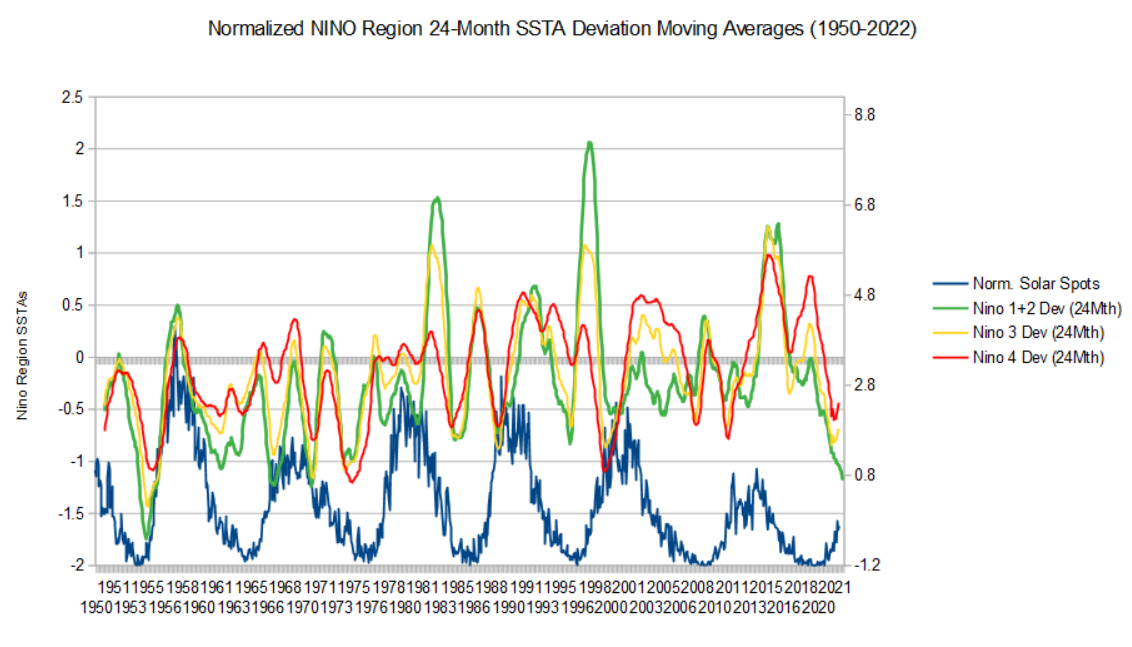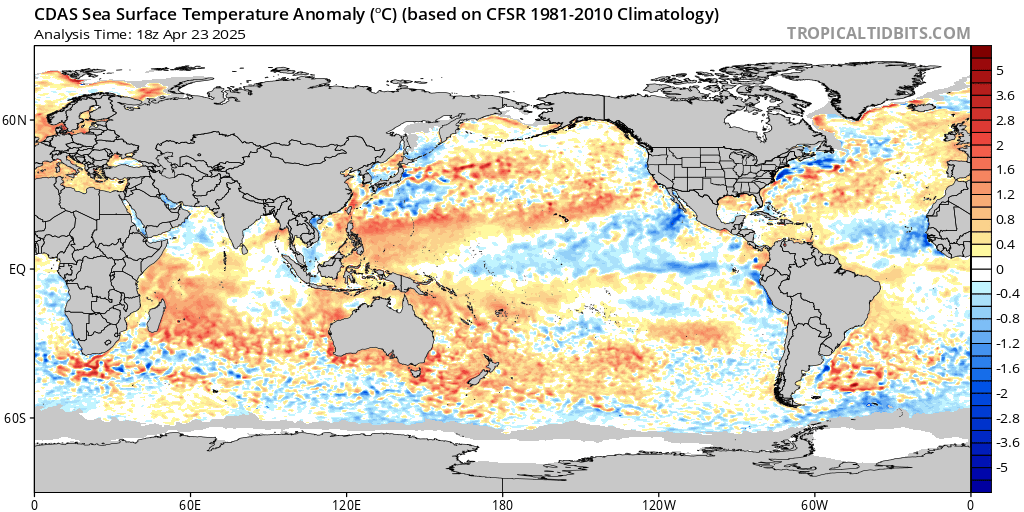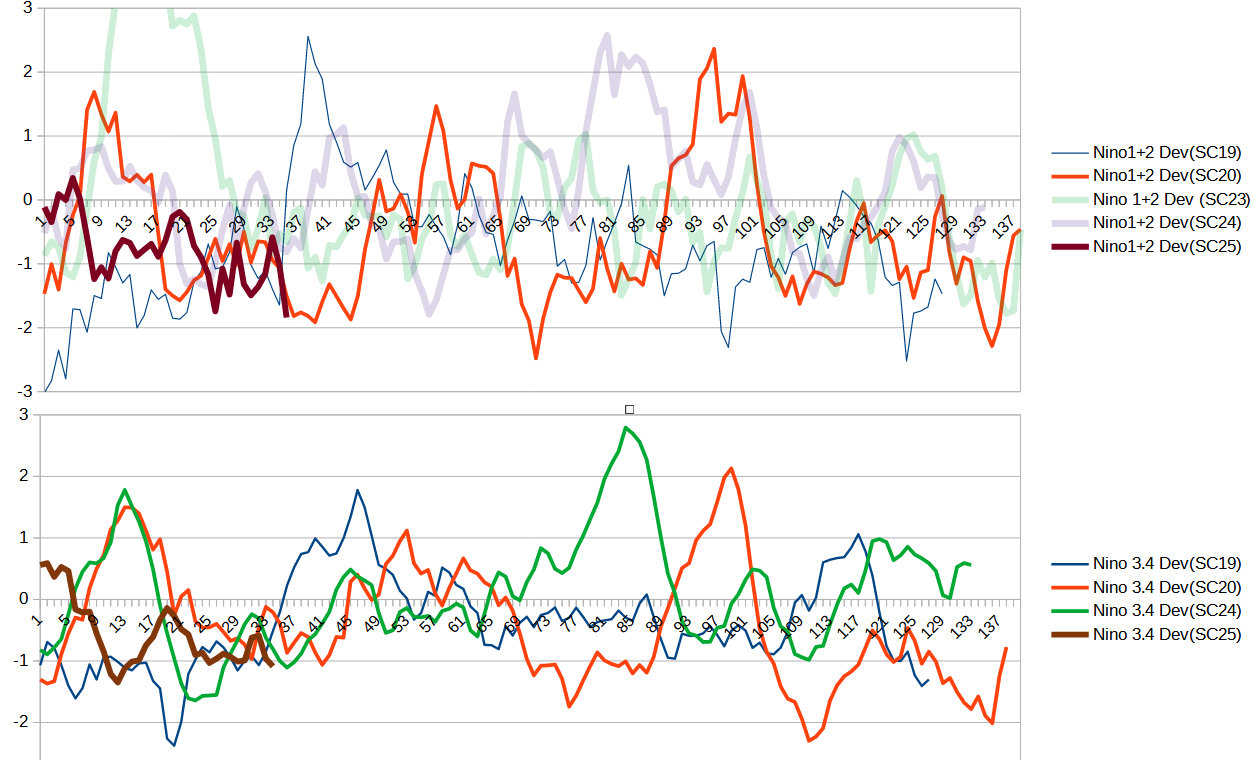|
|
Post by ratty on Nov 6, 2022 5:06:18 GMT
If your searching for a volcanic origin I would say MB is closer to it. The forces associated with buoyant fresh water and buoyant hot water plus the inverted thermal system around the eastern Pacific. Mixing, crossing and driven by wind. The blob is looking slightly weaker now; it's unusual to see something that intense and so well defined lasting for such a long period. Signed: Wiggle Watcher |
|
|
|
Post by ratty on Nov 6, 2022 5:12:20 GMT
Repeating a prediction mad by a famous man around July 2020:
I don't think goat will be on the menu?
|
|
|
|
Post by nonentropic on Nov 6, 2022 5:19:30 GMT
OK lamb is my favorite anyway.
|
|
|
|
Post by ratty on Nov 6, 2022 5:49:24 GMT
OK lamb is my favorite anyway. |
|
|
|
Post by missouriboy on Nov 6, 2022 14:56:51 GMT
If your searching for a volcanic origin I would say MB is closer to it. The forces associated with buoyant fresh water and buoyant hot water plus the inverted thermal system around the eastern Pacific. Mixing, crossing and driven by wind. The blob is looking slightly weaker now; it's unusual to see something that intense and so well defined lasting for such a long period. Signed: Wiggle Watcher The long-term eruption data, spread over more than 700,000 years, showed that during the coldest times, when sea levels are low, undersea volcanism surges, producing visible bands of hills. When things warm up and sea levels rise to levels similar to the present, lava erupts more slowly, creating bands of lower topography. Tolstoy attributes this not only to the varying sea level, but to closely related changes in earth’s orbit. When the orbit is more elliptical, Earth gets squeezed and unsqueezed by the sun’s gravitational pull at a rapidly varying rate as it spins daily—a process that she thinks tends to massage undersea magma upward, and help open the tectonic cracks that let it out. When the orbit is fairly (though not completely) circular, as it is now, the squeezing/unsqueezing effect is minimized, and there are fewer eruptions.
The idea that remote gravitational forces influence volcanism is mirrored by the short-term data, says Tolstoy. She says the seismic data suggest that today, undersea volcanoes pulse to life mainly during periods that come every two weeks. That is the schedule upon which combined gravity from the moon and sun cause ocean tides to reach their lowest points, thus subtly relieving pressure on volcanoes below. Seismic signals interpreted as eruptions followed fortnightly low tides at eight out of nine study sites. Furthermore, Tolstoy found that all known modern eruptions occur from January through June. January is the month when Earth is closest to the sun, July when it is farthest—a period similar to the squeezing/unsqueezing effect Tolstoy sees in longer-term cycles. “If you look at the present-day eruptions, volcanoes respond even to much smaller forces than the ones that might drive climate,” she said.  |
|
|
|
Post by ratty on Nov 6, 2022 23:08:33 GMT
|
|
|
|
Post by nonentropic on Nov 7, 2022 7:26:18 GMT
that's getting interesting man talk about tanking.
|
|
|
|
Post by missouriboy on Nov 14, 2022 2:22:17 GMT
Hints of 60+ year cycles in the tropical Pacific. |
|
|
|
Post by Sigurdur on Nov 18, 2022 19:13:24 GMT
|
|
|
|
Post by missouriboy on Nov 21, 2022 19:55:40 GMT
Two-Year Trends in Nino Regions: 1950-2022
Looking at 24-Month running averages by ENSO Region, the 2022 Nino1+2 running average is below every other year since 1966. And 1966 was the up-slope of low cycle SC20. Look how low 1954 got. Could be some interesting things coming. Are we now getting more cold up-welling entraining itself in the east-west equatorial flow? All ENSO Regions were colder in the 1960s and 70s.
 |
|
|
|
Post by Sigurdur on Nov 21, 2022 20:14:56 GMT
Two-Year Trends in Nino Regions: 1950-2022
Looking at 24-Month running averages by ENSO Region, the 2022 Nino1+2 running average is below every other year since 1966. And 1966 was the up-slope of low cycle SC20. Look how low 1954 got. Could be some interesting things coming. Are we now getting more cold up-welling entraining itself in the east-west equatorial flow? All ENSO Regions were colder in the 1960s and 70s.
 Permission to further share the graph with attributes? |
|
|
|
Post by missouriboy on Nov 21, 2022 22:23:31 GMT
Two-Year Trends in Nino Regions: 1950-2022
Looking at 24-Month running averages by ENSO Region, the 2022 Nino1+2 running average is below every other year since 1966. And 1966 was the up-slope of low cycle SC20. Look how low 1954 got. Could be some interesting things coming. Are we now getting more cold up-welling entraining itself in the east-west equatorial flow? All ENSO Regions were colder in the 1960s and 70s.
Permission to further share the graph with attributes? Of course. |
|
|
|
Post by missouriboy on Nov 23, 2022 16:40:13 GMT
|
|
|
|
Post by missouriboy on Nov 23, 2022 17:06:14 GMT
Now note November 2022.  |
|
|
|
Post by missouriboy on Dec 5, 2022 7:31:42 GMT
Nino1+2 and Nino3.4 for Solar Cycles 19, 20, 24 & 25. Note how closely SC25 is tracking SC20. X-axis is month from beginning of cycle. Y-axis is deviation from long-term normal in degrees C. I remember the winters of the 1960s and 1970s (SC20 - 10/64 to 3/76, SC25 - 12/2019 to ?). Bunga bunga.
 |
|